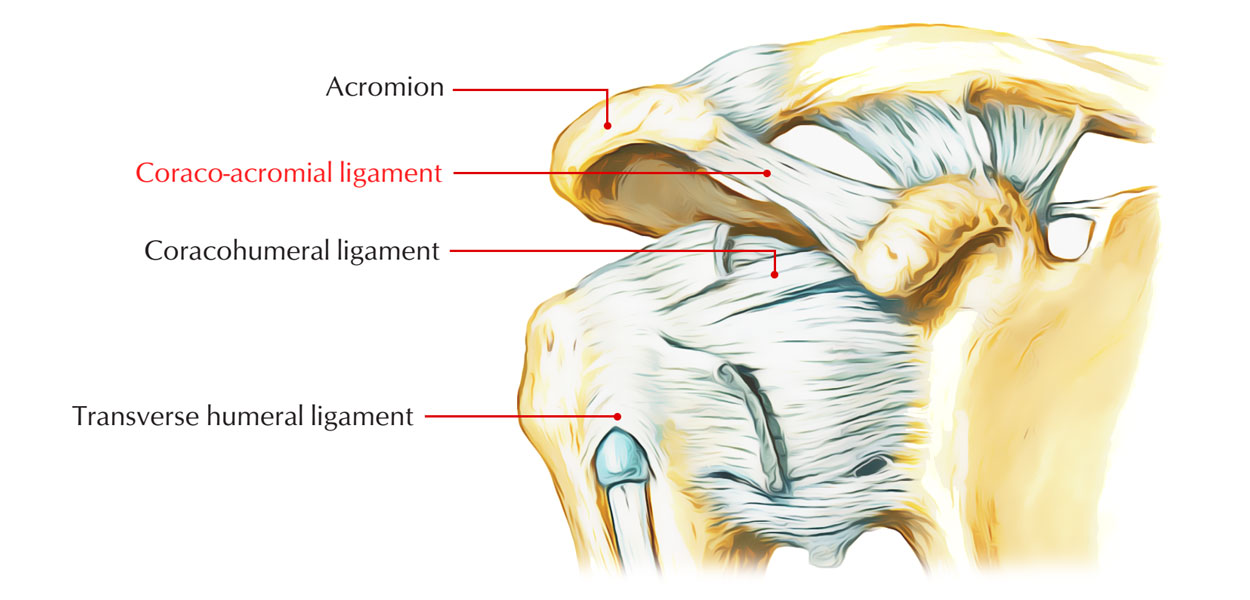Coracoacromial ligament guards the superior aspect of the joint and develops within coracoid and acromion processes. The ligament is often illustrated as containing two marginal bands as well as a thinner intervening part, the two bands being connected specifically towards the apex along with the base of the coracoid process, and also merging at the acromion.

Coraco-acromial Ligament
Arch
Coracoid process and acromion process, with coracoacromial ligament in between create coracoacromial arch. This osseoligamentous structure creates a covering arch for the head of humerus above and also inhibits its superior displacement over the glenoid cavity. The large subacromial bursa is located within the arch superiorly and towards the tendon of supraspinatus along with greater tubercle of humerus inferiorly. The supraspinatus muscle goes below this arch and is located deep towards the deltoid where its tendon blends together with the joint capsule. This enhances the movement of supraspinatus tendon.
Bursa
Subacromial bursa is located within the coracoacromial ligament and acromion process above, and below supraspinatus tendon as well as joint capsule. It proceeds down under the deltoid; therefore it is also called subdeltoid bursa. It is the biggest synovial bursa within the body and enhances the activities of supraspinatus tendon below the coracoacromial arch. This ligament, along with the coracoid process as well as the acromion, creates a vault for the safety of the head of the humerus. It is connected, above, along with the clavicle and below surface of the deltoid muscle; below, by the tendon of the supraspinatus, a bursa being interposed. Its lateral border is constant with a dense lamina which goes beneath the deltoid over the tendons of the supraspinatus and infraspinatus. When the pectoralis minor is added, as sometimes is the case, inside the capsule of the shoulder-joint rather than in the coracoid process, it goes between these two straps, and the intervening part of the ligament is then deficient.
Clinical Significance
Impingement Syndrome
When the arm is elevated, the subacromial space (space within the anterior edge of the acromion along with the head of the humerus) contracts, where the supraspinatus muscle tendon travels. Anything that creates further contraction can cause an inflammatory response, causing impingement syndrome. Loss of functionality of the rotator cuff muscles, because of injury or loss of strength may result in the humerus to shift superiorly, causing impingement. Swelling and subsequent thickening of the subacromial bursa may also create impingement. This may be triggered by bony structures like subacromial spurs (bony protrusions via the acromion), osteoarthritic spurs on the acromioclavicular joint, and changes in the form of the acromion. Thickening or calcification of the coracoacromial ligament can also create impingement.

 (49 votes, average: 4.58 out of 5)
(49 votes, average: 4.58 out of 5)